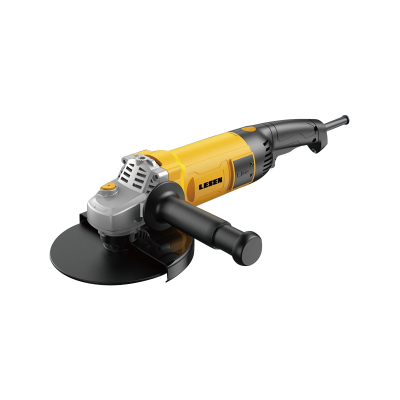
In the power tools industry, the ability to produce reliable and consistent equipment is closely tied to the efficiency of manufacturing. For an angle grinder factory, optimizing the production process is not only about improving output but also ensuring product consistency, safety, and long-term durability. Achieving this balance requires a structured approach involving process planning, material control, workforce coordination, and technological integration.
Structured Production Planning
Every improvement in efficiency starts with careful planning. An angle grinder factory typically begins with mapping out its production stages, ranging from parts manufacturing and assembly to testing and packaging. Creating a standardized workflow helps reduce delays, bottlenecks, and redundant tasks.
Factories often rely on enterprise resource planning (ERP) systems to coordinate procurement, inventory levels, and scheduling. By integrating data across departments, these systems help align raw material availability with production timelines, reducing idle time and improving material utilization.
Quality Material Sourcing and Inventory Control
Consistent product performance depends heavily on the quality of raw materials. An angle grinder relies on components such as motor windings, gear systems, casings, and safety switches—all of which must meet precise specifications. An angle grinder factory optimizes production by forming long-term relationships with vetted suppliers and implementing strict incoming inspection procedures.
Effective inventory control systems, such as just-in-time (JIT) delivery or automated restocking alerts, also contribute to smoother production flows. These methods help maintain consistent access to parts without overstocking, which can tie up resources or risk material degradation over time.
Automated and Semi-Automated Production Lines
Introducing automation is a key step toward improving consistency and reducing manual errors. In an angle grinder factory, automation can take many forms. For example, robotic arms may be used to assemble parts such as housing, gearboxes, or motor components. Computerized torque tools ensure that fasteners are tightened to specific values, reducing the risk of over- or under-tightening.
While full automation is not always feasible or necessary, combining automated systems with skilled labor, especially for tasks that require flexibility or detailed inspection, can improve the efficiency production line. Semi-automated lines allow for a balance between speed and adaptability, especially when producing different grinder models.
Continuous Workforce Training
Even with advanced machinery, human skill remains a critical element in quality production. An angle grinder factory invests in regular training for assembly line workers, quality inspectors, and maintenance technicians. Training ensures that employees are familiar with safety protocols, assembly techniques, and quality standards.
Skilled workers can also identify early signs of equipment wear or inconsistencies in the production process, allowing for quicker resolution of issues. Encouraging a culture of accountability and continuous improvement helps maintain stable performance and reduce downtime.
Real-Time Monitoring and Process Feedback
To maintain control over the production environment, real-time data monitoring is essential. Many factories use sensors and tracking software to observe metrics such as assembly time, temperature, vibration levels in motors, and alignment in gear systems. This data can alert managers to irregularities that might indicate machinery wear or incorrect assembly.
By analyzing production data regularly, an angle grinder factory can identify areas where process improvements are possible, whether through equipment upgrades, layout changes, or refined assembly sequences.
Standardized Testing and Quality Assurance
Before an angle grinder reaches the customer, it must pass several quality checks. These include motor performance tests, noise and vibration assessments, load endurance trials, and safety feature verification. Consistent and standardized testing procedures help detect flaws that could affect long-term reliability.
A well-organized angle grinder factory integrates quality checks at multiple points along the production line rather than relying only on final inspections. This approach reduces rework and ensures that any defects are identified early, reducing their impact on the production flow.
Optimizing production in an angle grinder factory is a comprehensive effort that combines structured planning, quality control, automation, and continuous workforce development. By focusing on each stage of the manufacturing process and making data-driven adjustments, a factory can produce angle grinders that me
